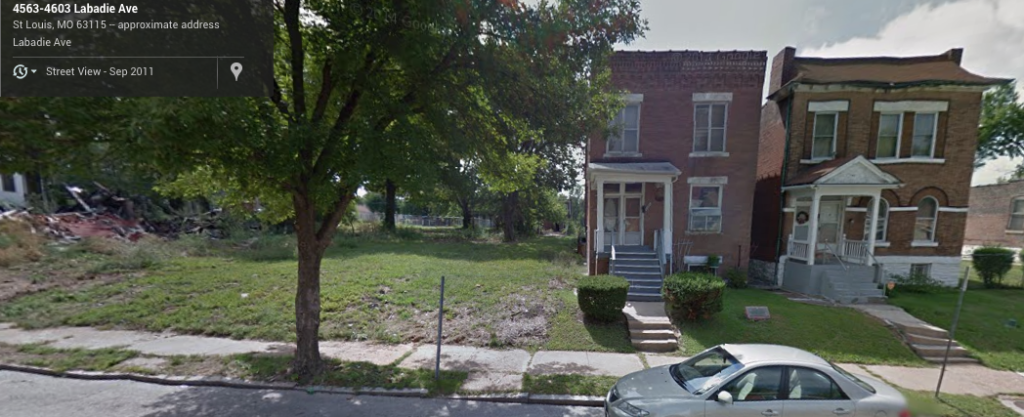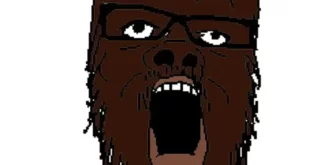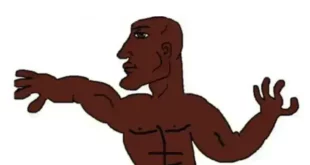Stuff Black People Don’t Like
January 24, 2015
About nine months before Darren Wilson and Michael Brown became household names, the New York Times published a feature story on type of life individual black people had collectively created in North St. Louis.
It wasn’t flattering. [In Places Like North St. Louis, Gunfire Still Rules the Night, 11-19-13]
The St. Louis Post-Dispatch decided to supplant the Times 2013 expose of black North St. Louis, with a story detailing the complete collapse of the one-time purported center of the city’s black middle class.

It was equally unflattering.
Both stories showcase the haunting validity of Robert E. Lee’s timeless observation: “I have always observed that wherever you find the negro, everything is going down around him, and wherever you find the white man, you see everything around him improving.” [Onetime center of St. Louis’ black middle class now fights high murder count, St. Louis Post-Dispatch, 1-23-15]:
It didn’t take long for Virginia Savage to realize she needed to leave.
The single mother moved her two children and nephew to an apartment on Greer Avenue in the Greater Ville neighborhood in late 2013. The block was half-empty, and her apartment stood among decaying, boarded-up buildings. It was what Savage, 48, could afford as a home health care aide, and it was close to where her kids went to school.
“That was not good for us,” Savage explained later. “We moved two doors down from where the prostitutes stayed. Drug dealers. Drug users.” There was nightly gunfire, and her children often didn’t want to come home after school.
The day before they moved late last year, a man was shot and killed a block away.
Now she lives just a mile east, still on Greer Avenue and still in the Fourth Ward.
But she said it feels like a different city: Fewer vacant buildings. Less gunfire. More long-term residents. Block parties. A block captain. Neighborhood patrols at night.
A little distance can mean a big difference when it comes to St. Louis crime.
Although murders were up 33 percent in 2014 over the year before, a Post-Dispatch analysis of police data shows that 102 of the 159 were slain in just eight of the city’s 28 wards.
The Fourth Ward, in the heart of north St. Louis, is a good place to get a feel for that violence. It had 15 murders last year, second-highest of all the wards.
It consists primarily of the Ville and Greater Ville neighborhoods — residents just call it the Ville — which once were the center of the city’s black middle class. Now, the typical household income is in the low- to mid-$20,000s, and unemployment is high. Between the 2000 and 2010 censuses, the population dropped 26 percent.
Neighborhoods are pockmarked by vacant lots and crumbling homes, with conditions varying widely from block to block. The alderman, Sam Moore, said there are 1,242 vacant buildings in the area, a number he repeats for emphasis. Five schools sit empty. There are 1,700 vacant lots. Some entire blocks are just overgrown grass.
“I’ve torn down over 600 buildings,” Moore said. “I can’t tear down all of them.”While murders were up, reports of other violent crimes — assault, rape and robberies — were down 24 percent last year, and showed a 56 percent drop since peaking in 2009. It was the biggest drop of any ward. The city had a 5.4 percent increase in such crimes last year.
The contradiction is difficult to explain. Falling population and clearance of abandoned buildings obviously play a role. But Moore doesn’t believe that violent crime is dropping at all, and said that if the numbers are down it’s only because police don’t patrol there enough.
The Greater Ville Preservation Commission director, Harold Crumpton, said that clearing vacant buildings has a significant effect. “When you tear down the places where (criminals) hang out,” he said, “they’re gone.”
In recent years, Crumpton led a community effort to drive out crime, with regular meetings with residents. He and Moore worked to identify nuisance properties and contact landlords.
He and volunteers have tacked up and passed out hundreds of signs encouraging people to report problems to the police and the Citizens’ Service Bureau. “We’re encouraging people to snitch,” he said.
FIGHTING BACK
Around the Ville, Crumpton, of the preservation commission, points to dozens of churches and historic brick homes that have been rehabbed, and blocks that remain fully populated.
“What we’re looking at,” Crumpton said, “is a neighborhood that at one point had real strong middle class families living in it, and some of them are still living here.
“These people are really fighting back,” he said.
But his enthusiasm level varies block by block. He contrasts buildings too far gone to fix against new community gardens. He sees a corner store where gang members hang out, a block of new homes filled with families and an alley where someone was murdered.
The Ville is filled with what Moore calls “dollhouses” — empty shells where much of the brick has been stripped away by thieves, exposing open rooms or entire floors of rotting furniture. Even one of the brightest spots — two blocks of newer houses on Lincoln Avenue — has a crumbling bungalow just waiting for a bulldozer.
“Dollhouses…”
One of those “dollhouses” (remember… the so-called ‘black middle-class’ that inhabited the area known as Greater Ville weren’t the people responsible with building the houses and neighborhood infrastructure; this was done by whites who left the area when Restrictive Covenants were deemed unconstitutional by the Supreme Court) in the Greater Ville neighborhood happens to be one of the most important addresses in the history of civil rights movement: The “Shelley House” at 4600 Labadie Avenue in North St. Louis.
The “Shelley House” being of the aforementioned 1948 Shelley v. Kraemer SCOTUS case… (for those wishing to quantify the costs of legalizing the spread of black dysfunction, consult here to learn the fiscal costs – burden – of the black undertow).
Once, the sky seemed the limit for those living in the Greater Ville neighborhood. This was as late as 1950, when the entire neighborhood was 100 percent white. [Justice and the American Metropolis, Clarissa Rile Hayward and Todd Swanstrom, p. 1-2]
Now, the condition of the nearly 100 percent black neighborhood is an ineluctable reminder that those who dared fight the black families integrating the Greater Ville neighborhood (because of the damning economic consequences they would bring, reflected back in the “dollhouses” of today) were absolutely, positively correct in their courageous stand.
What’s more, it can be stated with absolute certainty the city of St. Louis would be nearly homicide free without a black population; and the Greater Ville neighborhood would once again see the sky as the limit for those gentrifying the blighted, “dollhouse” infested community.
 Daily Stormer The Most Censored Publication in History
Daily Stormer The Most Censored Publication in History


